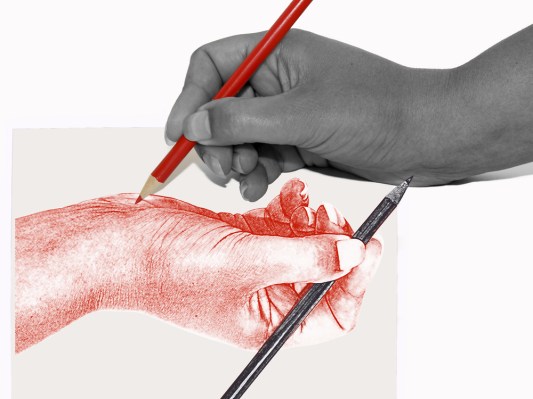According to a 2015 study of more than 4,000 designers conducted by Subtraction.com and Adobe’s Khoi Vinh, 64 percent of designers still prefer pencil and paper to begin the creative brainstorm process.
That’s not surprising: Paper is virtually always accessible and offers simplicity. Plus, pen on paper has been the traditional medium budding artists are taught from the beginning, making it easy to generate ideas freely and naturally.
Despite this, most companies continue to invest in digital drawing. Apple, Wacom, FiftyThree and others continue to design innovative hardware and apps, such as the iPad Pro and Bamboo Paper, to enhance performance and increase speed while on the go. Are the efforts to bring digital deeper into the creative workflow all in vain?
The answer, as you might suspect, is no. Digital will never be a paper killer, but hardware and apps leveraging the latest technology advances are closing the gap with undeniable benefits in accessibility, efficiency and artistry.
Access an unlimited toolkit anywhere
Inspiration doesn’t only happen in front of a computer or canvas. In fact, a 2012 Harvard study found that distraction is actually a key variable for creativity — meaning, it’s more probable that your genius idea will occur when you’re not in your studio.
However, we almost always have our phones with us. No matter where we are, we now have an unlimited toolkit of apps and services to turn raw inspiration into usable assets, such as color themes, shapes, brushes and patterns.
For example, apps can enable designers to turn any real-world object into a brush, texture, vector shape or color that they can use in mobile apps or desktop software. It allows designers to capture creative inspiration wherever they are and design with it immediately.
Stop duplicating work
While most people doodle out of boredom, designers sketch as the first step in their creative process. Sketching on paper is free-flowing and easy, but the challenge for designers is then having to quickly turn it into usable work — transferring ideas from paper to digital either by scanning and tracing, or recreating a digital version of what they sketched.
Digital will never be a paper killer.
The benefit of drawing with mobile apps is you can sketch your mock-up digitally and have that sketch turned into a usable Photoshop, Illustrator or InDesign file. Adobe Comp emulates the iterative process of paper, and saves time by eliminating the need to recreate work from scratch on the desktop.
Enabling a new medium
Interest in drawing on mobile devices is growing. There were more than 99,000 tweets about Apple Pencil within 24 hours of it being announced, and even CNN covered the excitement among the design community, calling it the tool to “replace paper sketchbooks.” That excitement is not misplaced.
With the rapid development of innovative pens and digital apps and improved hardware, artists are empowered to create a new medium of digital art where natural media can be realistically simulated, including watercolor, pastels and the aesthetic of oils on canvas — all on a single mobile device:
- Playing erhu (Kaizo Goh): http://www.illustratordrawserved.com/gallery/Playing-erhu/28670917
- HELP! (Yasin Isik): http://www.illustratordrawserved.com/gallery/HEEEEEEEEEEELP/29129323
- Hotline Bling Pattern (Jazz Williams): http://www.illustratordrawserved.com/gallery/Hotline-Bling-Pattern/30996589
- Kate (Razielle Carolino): http://www.sketchserved.com/gallery/Kate/29475597
- Texture and layers: http://www.sketchserved.com/gallery/October-2015/30375783
The future of digital drawing
Integrating mobile technology and hardware into the concepting and ideation stage of the creative process may sound novel to some designers, but it isn’t new. When Wacom introduced its first pen tablet in 2005, it was initially met with skepticism. Yet today, we take for granted the prevalence and use of Wacom tablets for drawing.
As hardware and apps continue to expand capabilities and evolve to better emulate the paper experience, more designers will adopt digital as a larger part of the creative process. As technology advances, digital also will enable new forms of expressive painting, such as the ability to paint different lighting environments or apply 3D textures for paint.
Paper will never be obsolete as a medium for ideation, production or publication, but initiating the creative process digitally will emerge as an increasingly faster way to capture ideas, iterate and turn concepts into production-ready designs.
